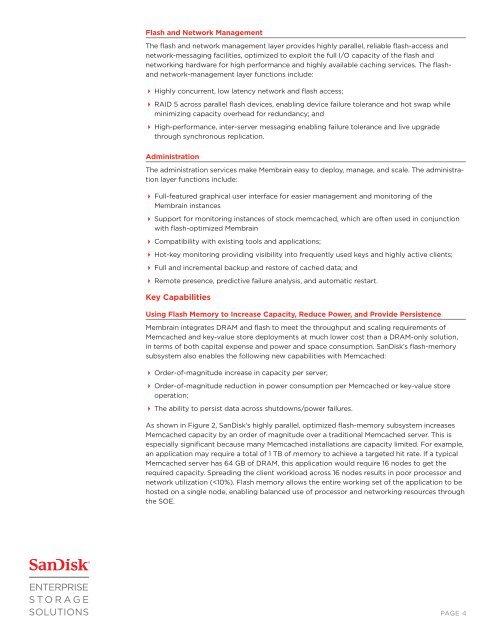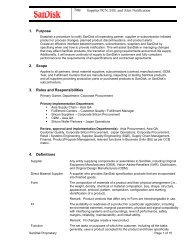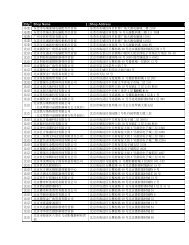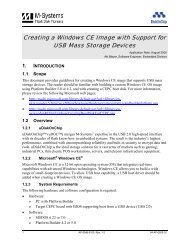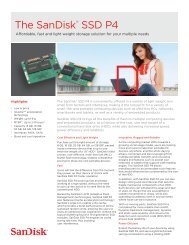Membrain Software White Paper - SanDisk
Membrain Software White Paper - SanDisk
Membrain Software White Paper - SanDisk
You also want an ePaper? Increase the reach of your titles
YUMPU automatically turns print PDFs into web optimized ePapers that Google loves.
Flash and Network Management<br />
The flash and network management layer provides highly parallel, reliable flash-access and<br />
network-messaging facilities, optimized to exploit the full I/O capacity of the flash and<br />
networking hardware for high performance and highly available caching services. The flashand<br />
network-management layer functions include:<br />
Highly concurrent, low latency network and flash access;<br />
RAID 5 across parallel flash devices, enabling device failure tolerance and hot swap while<br />
minimizing capacity overhead for redundancy; and<br />
High-performance, inter-server messaging enabling failure tolerance and live upgrade<br />
through synchronous replication.<br />
Administration<br />
The administration services make <strong>Membrain</strong> easy to deploy, manage, and scale. The administration<br />
layer functions include:<br />
Full-featured graphical user interface for easier management and monitoring of the<br />
<strong>Membrain</strong> instances<br />
Support for monitoring instances of stock memcached, which are often used in conjunction<br />
with flash-optimized <strong>Membrain</strong><br />
Compatibility with existing tools and applications;<br />
Hot-key monitoring providing visibility into frequently used keys and highly active clients;<br />
Full and incremental backup and restore of cached data; and<br />
Remote presence, predictive failure analysis, and automatic restart.<br />
Key Capabilities<br />
Using Flash Memory to Increase Capacity, Reduce Power, and Provide Persistence<br />
<strong>Membrain</strong> integrates DRAM and flash to meet the throughput and scaling requirements of<br />
Memcached and key-value store deployments at much lower cost than a DRAM-only solution,<br />
in terms of both capital expense and power and space consumption. <strong>SanDisk</strong>’s flash-memory<br />
subsystem also enables the following new capabilities with Memcached:<br />
Order-of-magnitude increase in capacity per server;<br />
Order-of-magnitude reduction in power consumption per Memcached or key-value store<br />
operation;<br />
The ability to persist data across shutdowns/power failures.<br />
As shown in Figure 2, <strong>SanDisk</strong>’s highly parallel, optimized flash-memory subsystem increases<br />
Memcached capacity by an order of magnitude over a traditional Memcached server. This is<br />
especially significant because many Memcached installations are capacity limited. For example,<br />
an application may require a total of 1 TB of memory to achieve a targeted hit rate. If a typical<br />
Memcached server has 64 GB of DRAM, this application would require 16 nodes to get the<br />
required capacity. Spreading the client workload across 16 nodes results in poor processor and<br />
network utilization (


